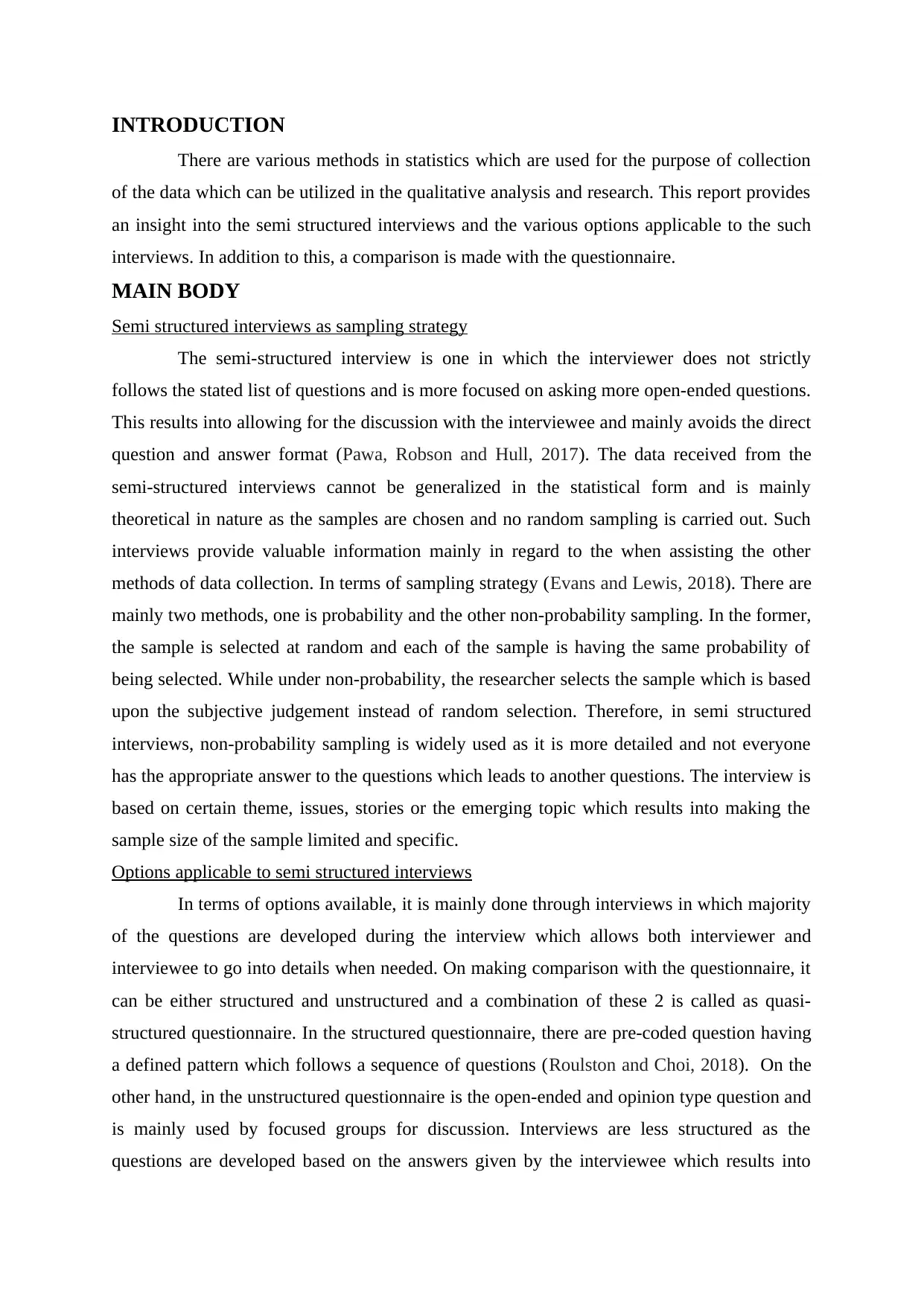An Overview of Semi-Structured Interviews in Business Statistics
VerifiedAdded on 2023/06/18
|5
|677
|126
Report
AI Summary
This report provides an overview of semi-structured interviews as a sampling strategy within business statistics, contrasting it with questionnaires and exploring its applications in qualitative research. It emphasizes that semi-structured interviews involve open-ended questions, fostering detailed discussions and gathering in-depth insights into opinions and perceptions. The report highlights the use of non-probability sampling in these interviews, where sample selection is based on subjective judgment rather than random selection, making the data theoretical and specific. While questionnaires can be structured, unstructured, or quasi-structured, interviews are less structured, limiting the options for question creation. The report concludes that semi-structured interviews are valuable for gathering detailed information, though they offer fewer options compared to questionnaires; students can find more resources and solved assignments on Desklib.
1 out of 5












![[object Object]](/_next/static/media/star-bottom.7253800d.svg)